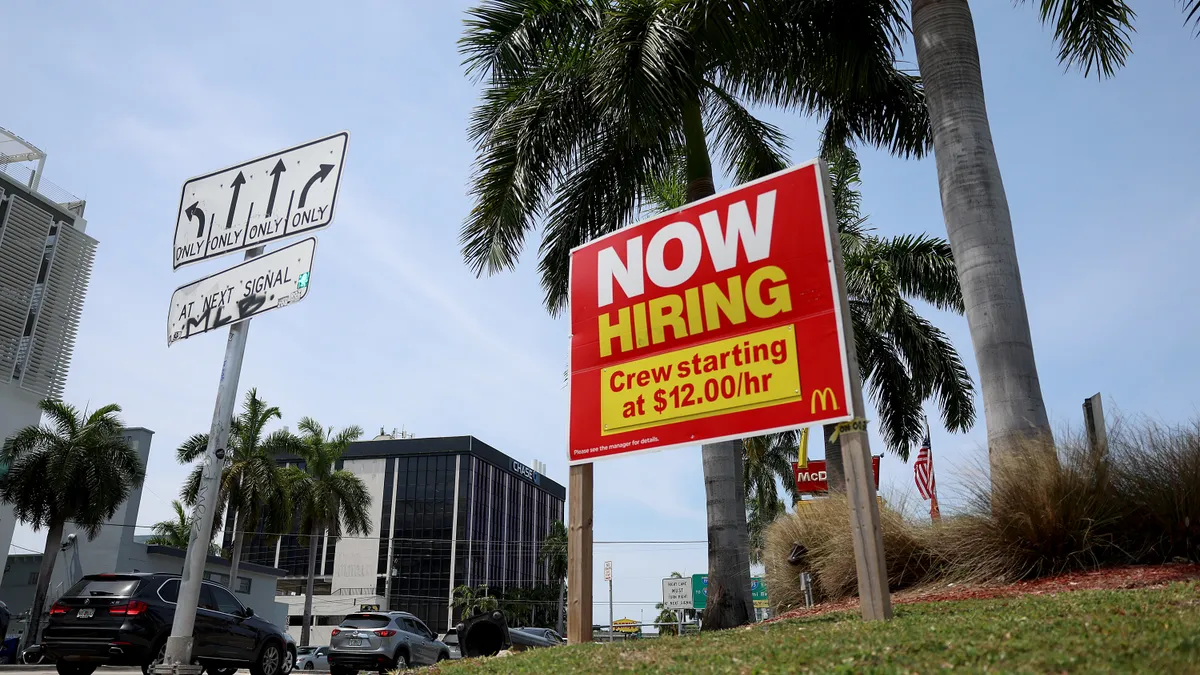Despite the favorable climate for mergers and acquisitions, deals are slipping because of staffing constraints at the consulting firms that do the integral due diligence, Omar Choucair, CFO of financial close software company Trintech, says.
“Last year was phenomenal [for M&A] and this year is even better,” Choucair told CFO Dive. “Some of these folks are going to hit last year’s number by October. That puts a strain and pressure on all the ancillary companies they need to get deals done.”
Both U.S. and global mergers and acquisitions hit record highs during the first half of 2021, with $1.3 trillion in U.S. deals accounting for 47% of the $2.8 trillion in worldwide M&A, according to Refinitiv.
Probably the most staff-constrained are the Big Four accounting firms that do the lion’s share of both the buy-side and sell-side analyses that companies depend on to know if a deal makes sense.
“There are actually companies that are turning business away because they don’t have the staff to do the work,” said Choucair, who started his career, like many CFOs, analyzing M&A deals for one of the big firms. “I’ve never seen professional services firms turning away business.”
Buyers and sellers alike depend on third-party analyses to feel comfortable about a deal. The analysts will typically spend an intensive four-to-six week period looking at the target company’s balance sheet, cash flow, working capital, and its other financial reports. They’ll also look at the company’s biggest customers to gauge the stability of its revenue.
The outside firms are particularly necessary for deals involving private equity or venture capital firms that want to add to their portfolio; big companies making a strategic acquisition often do the work in-house because they have that capacity. But even in these cases, the company will bring in an outside firm, typically an investment banker, to render a fairness opinion on the valuation — basically a small-scale version of a full-blown analysis.
“Typically the board of directors would like some comfort,” Choucair said. “They would want to have a fairness opinion done because it’s good corporate governance to have that in their files.”
For the biggest companies of all, those typically at $5 billion or more a year in annual revenue, it’s less crucial to have an outside opinion done, so they could keep the due diligence entirely in-house.
“For a company like Pepsi, it’s just not material,” he said.
Deal drivers
At the heart of the strong M&A market is a confluence of three trends, Choucair believes. The first is continuing historically low interest rates, which makes affordable debt widely available to companies looking to grow inorganically.
“That’s obviously very helpful because the availability of debt is a key driver to these deals,” he said.
The second trend is the Biden administration’s desire to eliminate, or at least curtail, carried interest rules, which tax private equity and venture capital earnings as capital gains at 20% rather than as regular income, which can lead to a rate twice as high.
“To the extent they could take away the interest carry is a big issue for a lot of the PE firms and potentially some of the SPAC [special purpose acquisition company] firms, so there is somewhat of a trigger on that,” he said.
The third trend is the rise of SPACs, shell companies that are racing to identify merger targets and turn them public before they have to return investors’ money, typically within 18 or 24 months.
“They have really driven a lot of volume and the demand for this consulting work,” he said.
SPAC deals tend to be even more work-intensive than other types of acquisitions because the target company has to be made public-ready, which includes complying with Sarbanes-Oxley disclosure rules, so they often absorb even more consulting resources.
“If you’re just a private company going to another PE, you don’t have to be public-company ready, but the SPAC targets do,” he said.
Although capacity problems in the consulting field are a big reason for deal slowdowns, it’s not the only one. Other businesses ancillary to M&A activity, including rep and warranty insurance providers, are facing their own resource crunch. Carriers, facing more business than they can handle, have pared back the types of deals they cover to just those that fit their most preferred underwriting criteria.
“They can be, and are being, highly particular with the deals they choose to actually underwrite,” Emily Standen, senior vice president of insurance broker Marsh JLT Specialty, has said.
Acquisition readiness
Choucair, who has been CFO of several portfolio companies of private equity firms, says companies, whether they’re buying or selling, can best close deals by getting their finances in deal-ready shape.
On the sell side, companies whose financial reporting is automated and integrated make themselves more attractive targets, because buyers find it easier and quicker to do their due diligence, which also eases the burden on the third-party analysts they bring in.
“To the extent that the target has automated a lot of their back-end processes and can quickly and efficiently close the books and have all their financial reporting in order, that’s a huge advantage for them, because they already have all this infrastructure in place,” he said.
On the buy side, automated and integrated financial reporting is helpful if only because it makes the integration go more smoothly once a deal is done. “Make sure you have your own house in order,” he said.





















